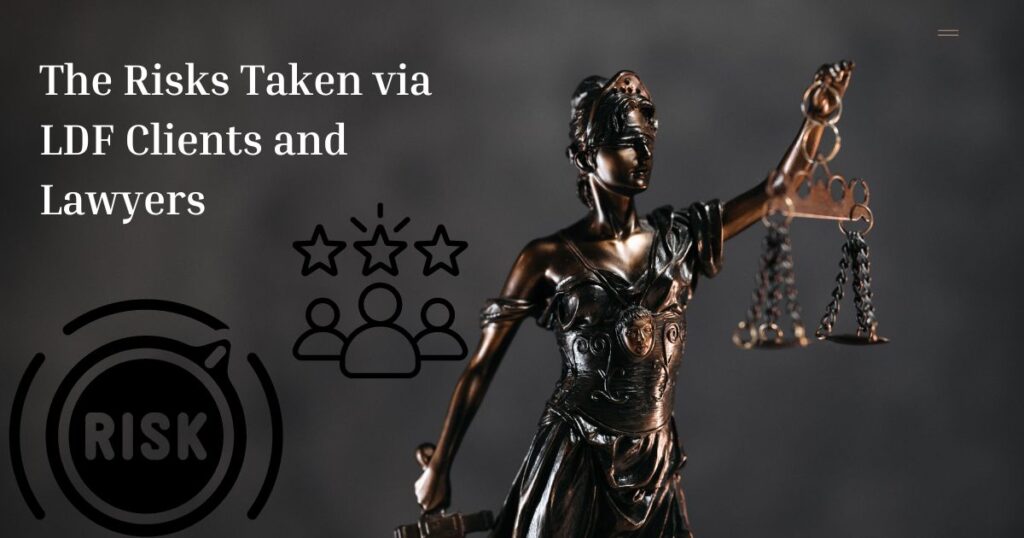
Introduction
What Was the Social Impact of the Decision in Brown v. Board of Education?
The landmark Supreme Court case, Brown v. Board of Education, decided in 1954, is frequently regarded as a turning point in American history. This monumental decision declared state laws establishing separate public schools for black and white scholars to be unconstitutional. The article explores the social impact of Education, and how it reshaped society.
Key Takeaways from Brown v. Board of Education
- Landmark Decision: The 1954 ruling declared national legal guidelines setting up separate public schools for Black and white college students unconstitutional, marking a pivotal moment in American history.
- Civil Rights Catalyst: This case ignited the civil rights movement, challenging the “separate but identical” doctrine installed through Plessy v. Ferguson in 1896.
- Psychological Evidence: The Doll Test illustrated the damaging mental outcomes of segregation on children, influencing the Supreme Court’s ruling.
- The bravery of Plaintiffs: The courage of the NAACP Legal Defense Fund’s plaintiffs and legal professionals, specifically Thurgood Marshall, highlighted the dangers taken for justice.
- Role of Women: Black women and women played a crucial position within the desegregation movement, often left out in historical accounts.
Brown v. Board of Education: A Transformative Case in American History
When I consider the achievements in American history that have shaped our public, Brown v. Board of Education sticks out as a monumental case that changed the scene of preparing and social liberties in the US.
In 1954, the Supreme Court’s choice in this example declared that racial segregation in public colleges become unconstitutional, basically remodeling how I and many others view schooling and equality in America.
The Case that Transformed America
This case became more than just a felony choice; it became a turning point that helped ignite the civil rights movement. The ruling signaled to the country that segregation, which were legally sanctioned for the reason of the Plessy v. Ferguson selection in 1896, was no longer desirable.
I apprehend that this choice did now not simplest trade legal guidelines but additionally reshaped social attitudes toward race and equality. It laid the groundwork for in addition civil rights advancements, influencing legislation like the Civil Rights Act of 1964 and the Voting Rights Act of 1965.
The Doll Test: A Key Element
One of the most compelling portions of proof presented inside the Brown case became the Doll Test, carried out via Kenneth and Mamie Clark inside the Nineteen Forties.
In this check, younger African American children were shown two dolls—one Black and one white—and asked which one they favored. Disturbingly, most kids favored the white doll, associating it with wonderful developments, whilst the Black doll became seen as bad.
I find it heart-wrenching that this choice illustrated the mental harm that segregation inflicted on young minds. The Supreme Court stated this evidence of their ruling, acknowledging that separate educational centers had been inherently unequal and unfavorable to children’s shallowness.
The Risks Taken via LDF Clients and Lawyers

The Risks Taken via LDF Clients and Lawyers
As I delve deeper into the records of Brown v. Board, I am struck by the braveness exhibited by way of the plaintiffs and the felony crew from the NAACP Legal Defense Fund (LDF).
They confronted massive dangers and made the status quo difficult. Many of the households worried persevered threats, harassment, and violence in reality for looking for justice for his or her children. This bravery in the face of change is something I deeply recognize.
The legal professionals, including Thurgood Marshall, who later became the primary African American Supreme Court Justice, performed a critical function in this combat. They knew they were risking their careers and lives, however, their commitment to justice changed into unwavering.
The Vital Role of Black Women and Girls
It’s important to recognize that Black ladies and women had been at the forefront of the school desegregation motion, but their contributions are often overlooked. Most of the plaintiffs in the Brown case had been girls who bravely stood up against an unjust system.
I have come to understand how their voices and movements had been instrumental in tough segregation and advocating for the same educational opportunities. Their tales need to be instructed and celebrated, as they paved the way for destiny generations to combat for civil rights.
Resistance to Desegregation: The Southern Manifesto
After the ruling in Brown v. Board of Education, many inside the South vehemently adversarial desegregation. The Southern Manifesto, signed with the aid of 101 participants of Congress in 1956, denounced the Supreme Court’s selection and was known as for resistance to desegregation.
This prepared competition, regularly known as “Massive Resistance,” took much bureaucracy, inclusive of the closure of public colleges instead of compliance with the ruling. It’s sobering to think about the lengths to which a few people and institutions went to maintain the repute quo.
The Lasting Impact of the Doll Test
Reflecting on the Doll Test, I realize its significance extends past the Brown case. It serves as a reminder of the iconic psychological outcomes of racism and segregation.
The test has been noted in various discussions approximately race family members and training, highlighting how perceptions of self-confidence can be fashioned by using societal attitudes in the direction of race.
I accept as true that knowledge of the results of the Doll Test can inform contemporary discussions on equality and schooling.
Celebrating the Women Behind Brown
As I explore the contributions of girls to the Brown case, I need to highlight six remarkable ladies who performed essential roles.
Their braveness and resolution were instrumental in tough the injustices they confronted. By bringing their stories to mild, I desire to contribute to a greater know-how of this pivotal moment in history. These girls had been no longer simply passive contributors; they had been energetic retailers of trade.
The Legal Minds Behind the Case
Meeting the criminal minds who fought for justice in Brown v. Board of Education is critical to expertise the case’s effect. Thurgood Marshall and his crew applied innovative felony techniques, combining historic context with mental proof to argue against segregation.
Their meticulous guidance and commitment to justice exemplify the determination required to task deeply entrenched systems of inequality. I recognize their determination and the basis they laid for the destiny of civil rights advancements.
Further Learning: A Reading List
For the ones inquisitive about exploring greater about Brown v. Board of Education, I propose diving into a curated reading list. Books and articles that cover the case’s history, prison arguments, and its social effect can offer precious insights.
Engaging with these assets will deepen one’s information of the complexities surrounding this landmark selection.
The Role of the LDF Microsites
I additionally locate that the NAACP Legal Defense Fund has created microsites that offer unique statistics about Brown v. Board of Education.
These online sources include historical files, memories, and educational materials that may decorate one’s expertise in the case. They are priceless equipment for each person trying to discover the criminal and social ramifications of the ruling.
The LDF National Headquarters and D.C. Office

The LDF National Headquarters and D.C. Office
Lastly, I apprehend the importance of the LDF’s countrywide headquarters and its Washington D.C. Office in the combat for civil rights. These places served as hubs for organizing criminal techniques, coordinating network activism, and advocating for coverage changes.
The work done in those places of work became vital in pushing for desegregation and advancing the reason for civil rights.
From Segregation to Integration: The Ripple Effect I Saw from Brown v. Board of Education
| Key Points | Description |
|---|---|
| Ripple Effect | Brown v. Board of Education initiated challenges to segregation across all areas of American life. |
| Foundation for Activism | Civil rights activists used the ruling to advocate for desegregation in public transportation, restaurants, and housing. |
| Symbol of Possibility | The decision demonstrated that the legal system could promote equality and challenge segregation. |
| Resistance in the South | Local governments often attempted to block desegregation, and some families withdrew their children from public schools. |
| Deep-Rooted Inequality | The resistance highlighted the persistent racial inequality in society, despite the progress made by Brown. |
| Path to Lasting Change | Although change did not happen overnight, Brown laid the groundwork for significant societal transformation. |
In my opinion, the ripple consequences of Brown v. Board of Education went some distance past just integrating colleges. It activated a series of responses that challenged segregation in all regions of American existence. After the ruling, civil rights activists like me used it as a foundation to fight for desegregation in public transportation, restaurants, and even housing.
The ruling became a symbol of what turned into possible, displaying that the felony device can be used to sell equality.
Of direction, there has been strong resistance, mainly in the South. Many neighborhood governments tried to block desegregation, and there were instances when white families removed their youngsters from public schools to avoid integration.
This resistance simply made it clearer to me how deep-rooted racial inequality became in our society. Still, I believe Brown paved the manner for lasting change, although that alternative didn’t occur overnight.
A New Era of Civil Rights: Social Changes I Witnessed After Brown v. Board of Education
For me, the Brown choice marked the start of a brand new era in the fight for civil rights. It wasn’t just a legal victory—it sparked a wave of activism that might sweep throughout the U.S.A. The ruling stimulated civil rights leaders like Martin Luther King Jr. And Rosa Parks to push for even greater desegregation and social reforms.
It wasn’t long after Brown that we saw the Montgomery Bus Boycott, the March on Washington, and the passage of groundbreaking civil rights regulation.
This era of activism additionally inspired other social actions. From my angle, Brown laid the inspiration for movements that sought equality for ladies, LGBTQ+ people, and those with disabilities.
The decision confirmed that criminal battles may want to cause actual social trade, and that lesson continues to resonate these days. I see its impact in nearly every social justice movement that has followed.
FAQs For What Was the Social Impact of the Decision in Brown v. Board of Education?
What were the main final results of Brown v. Board of Education?
The predominant final results of Brown v. Board of Education turned into the Supreme Court ruling that racial segregation in public schools was unconstitutional.
The decision declared that “separate instructional facilities are inherently unequal,” overturning the “separate but same” doctrine.
Why do I suppose Brown v. Board of Education changed into important for the Civil Rights Movement?
I accept as true that Brown changed into critical because it became the felony breakthrough that inspired similar civil rights reforms.
It showed that segregation might be defeated in court and gave activists like me the momentum to push for broader social modifications, ultimately main to victories just like the Civil Rights Act and the Voting Rights Act.
How did Brown v. Board of Education affect U.S. Society past education?
From my attitude, the decision didn’t simply affect faculties—it modified the entire landscape of American life. It challenged segregation in public transportation, housing, and employment, influencing social movements for equality across the board.
What challenges did I see all through the implementation of Brown v. Board of Education?
I saw big resistance, especially in southern states. Some faculties even closed to avoid desegregation. Federal intervention, inclusive of the course of the Little Rock Nine disaster, became vital to put into effect the ruling, displaying simply how tough the route to genuine equality was.
Conclusion
In conclusion, Brown v. Board of Education isn’t always only a record case; it’s miles a testament to the long-lasting warfare for equality in America. I mirror how this example has motivated my expertise in justice and the importance of standing up against injustice.
The braveness of those who fought for desegregation, mainly the girls and ladies whose voices have been critical to the movement, conjures up me to maintain advocating for equality in all areas of society.
The legacy of Brown reminds us that the combat for justice is ongoing and that each individual can make a contribution to a greater equitable future.






